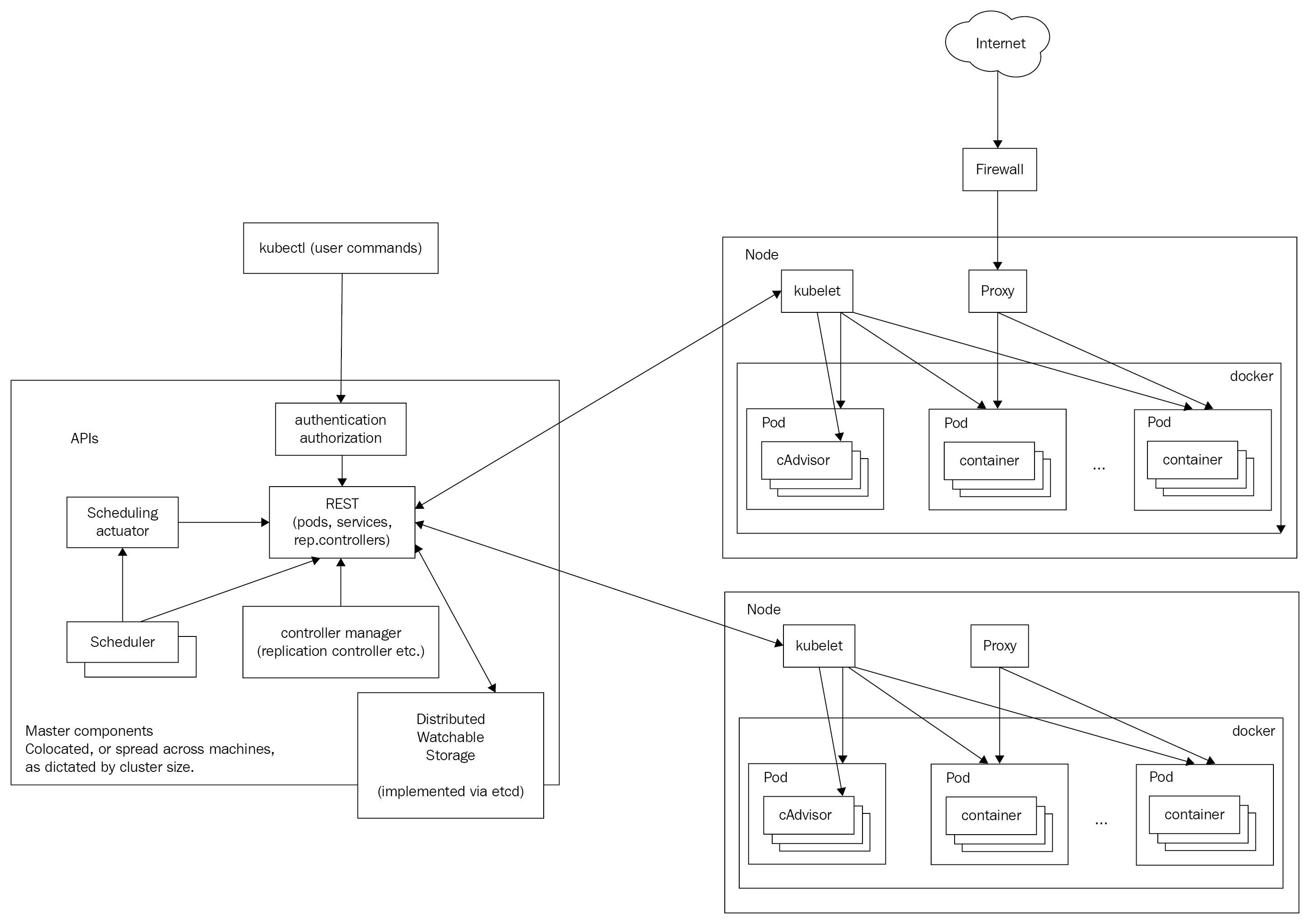In this section, I'll briefly introduce many important Kubernetes concepts and give you some context as to why they are needed and how they interact with other concepts. The goal is to get familiar with these terms and concepts. Later, we will see how these concepts are woven together and organized into API groups and resource categories to achieve awesomeness. You can consider many of these concepts as building blocks. Some of the concepts, such as nodes and masters, are implemented as a set of Kubernetes components. These components are at a different abstraction level, and I discuss them in detail in a dedicated section, Kubernetes components.
Here is the famous Kubernetes architecture diagram:




